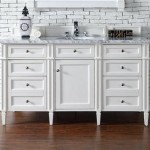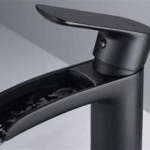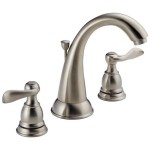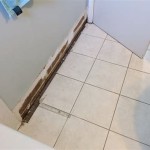Can You Paint a Bathroom Sink and Countertop?
Updating a bathroom can be a significant undertaking, often involving costly renovations. However, there's a more budget-friendly option available: painting. While painting a bathroom sink and countertop may seem unconventional, it can be a viable way to refresh the space without breaking the bank. This approach presents a unique set of challenges and considerations, so understanding the process and its limitations is crucial.
The Feasibility of Painting Bathroom Surfaces
Painting a bathroom sink and countertop is possible, but it's important to acknowledge that it comes with limitations. Firstly, the material of the sink and countertop plays a crucial role. Porcelain and ceramic surfaces are generally more receptive to paint, while materials like natural stone or solid surface countertops may present greater difficulties.
Secondly, the longevity of the paint job depends heavily on the quality of preparation and the paint type. Regular wear and tear, exposure to water and cleaning chemicals, and the abrasive nature of using a sink can all impact the paint's durability. If the sink and countertop are heavily used, the paint might require frequent touch-ups.
The Preparation Process: Key to Success
The success of painting a bathroom sink and countertop hinges on meticulous preparation. This process involves several steps:
- Cleaning: The surfaces must be thoroughly cleaned to remove any dirt, grease, or soap residue. Use a mild detergent and a non-abrasive cleaning cloth. Ensure the surfaces are completely dry before proceeding.
- Sanding: Sanding the surfaces creates a rough texture, helping the paint adhere better. Use fine-grit sandpaper and work in a circular motion. Be cautious not to sand too aggressively, as it could damage the underlying material.
- Priming: Applying a primer specifically designed for bathroom surfaces is crucial. This layer acts as a bonding agent, enhancing the paint's adhesion and preventing staining.
The quality of the primer plays a significant role in the overall success of the painting project. Ideally, choose a primer that's specifically formulated for bathroom surfaces, offering moisture resistance and superior adhesion. This will help to ensure a longer-lasting finish.
Choosing the Right Paint: Considerations and Recommendations
Selecting the appropriate paint is crucial for achieving a durable and aesthetically pleasing finish. Consider the following factors when choosing paint for your bathroom sink and countertop:
- Moisture Resistance: Bathroom surfaces are constantly exposed to moisture. Therefore, selecting a paint specifically formulated for high-moisture areas is essential. This type of paint contains special resins that resist water damage and mildew growth.
- Durability: Look for a paint with excellent wear and tear resistance. Paints designed for high-traffic areas, such as kitchens and bathrooms, typically offer greater durability. This will help the paint withstand the daily use of a sink and countertop.
- Finish: Consider the desired aesthetic. Glossy finishes are more durable and easier to clean, while matte finishes offer a more contemporary look. Semi-gloss finishes provide a good balance between durability and a softer appearance.
Epoxy paints are often recommended for bathroom sinks and countertops. They offer excellent adhesion, moisture resistance, and durability, making them suitable for high-wear areas. However, epoxy paints are more complex to apply and may require professional assistance.
Safety Precautions and Additional Tips
Painting a bathroom sink and countertop involves using chemicals and tools that require safety precautions:
- Ventilation: Ensure adequate ventilation during the painting process, as paint fumes can be harmful. Open windows or use a fan to circulate fresh air.
- Protective Gear: Wear a respirator mask, gloves, and eye protection to safeguard yourself from paint fumes and contact irritants.
- Proper Tools: Use paintbrushes or rollers designed for the type of paint you're using. A small roller is often helpful for larger surfaces, while a brush is ideal for corners and edges.
When applying the paint, work in thin, even coats. Allow each coat to dry completely before applying the next. Be careful not to apply too much paint at once, as this can lead to drips and uneven coverage. It's also advisable to tape off surrounding areas to avoid accidental paint splatters.
After the paint has dried completely, seal the surfaces with a waterproof sealant. This will further enhance the paint's durability and protect it from moisture and stains. Following these guidelines ensures a safe and successful painting project.
Remember, while painting a bathroom sink and countertop can be a cost-effective way to refresh the space, it's important to weigh the benefits against the potential challenges and limitations. Consider the material of the sink and countertop, the frequency of use, and the desired level of durability before embarking on this project.

Paint Bathroom Vanity Countertop Sink So Easy A Piece Of Rainbow

How To Easily Spray Paint Bathroom Countertops My Homier Home

Paint Bathroom Vanity Countertop Sink So Easy A Piece Of Rainbow
:strip_icc()/101922779-2cbc45e123c34827afb4f601723b03ca.jpg?strip=all)
How To Paint Bathroom Countertops

Paint Bathroom Vanity Countertop Sink So Easy A Piece Of Rainbow

How To Easily Spray Paint Bathroom Countertops My Homier Home

Can You Paint A Countertop Re Sick Of Absolutely Recreated Designs

How To Paint A Countertop Don T Make These Mistakes Bathroom Vanity Makeover Painted Diy

How To Paint A Countertop Don T Make These Mistakes Blessed Beyond Crazy

Spray Painting Bathroom Counters Madness Method
Related Posts







